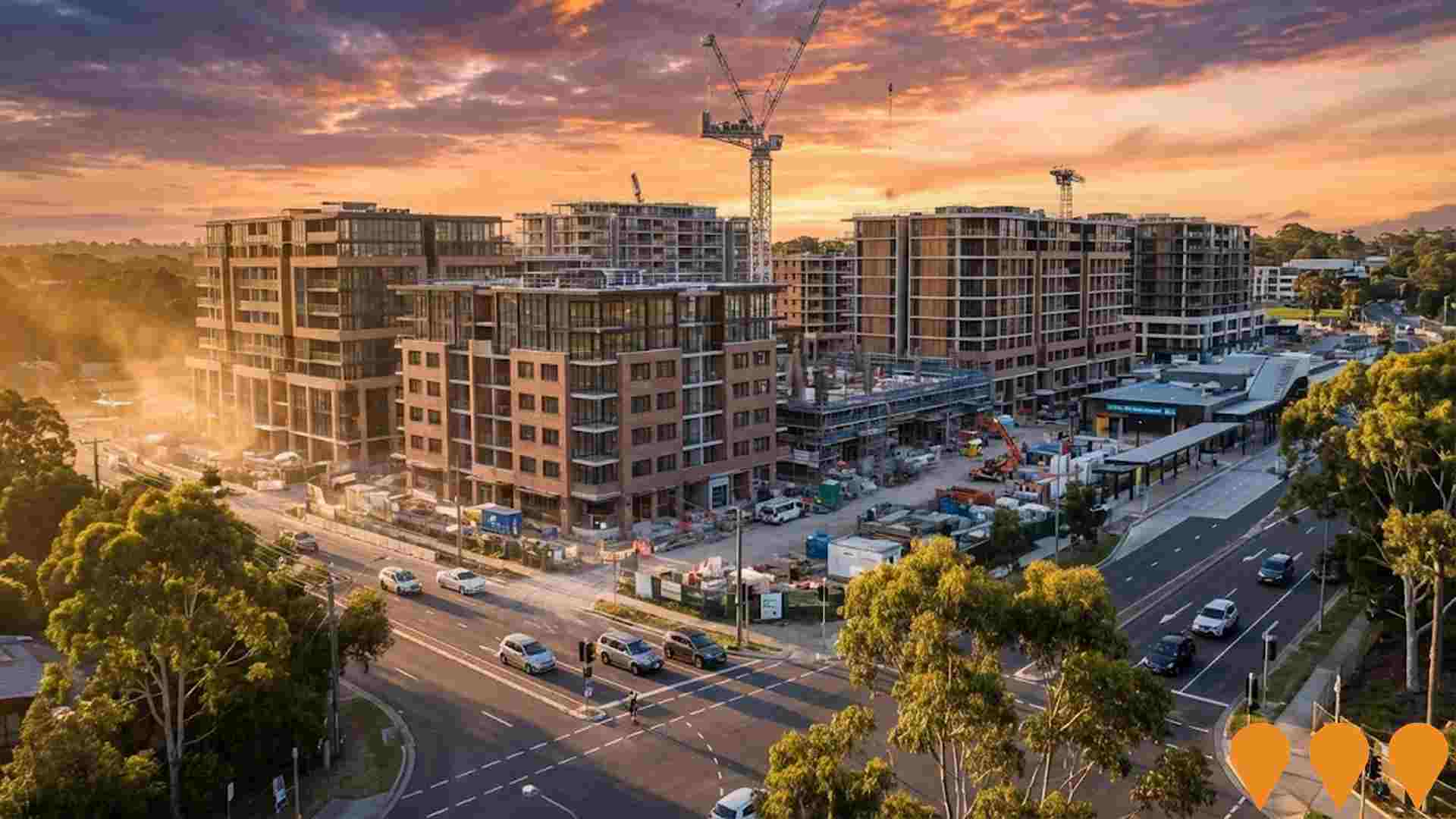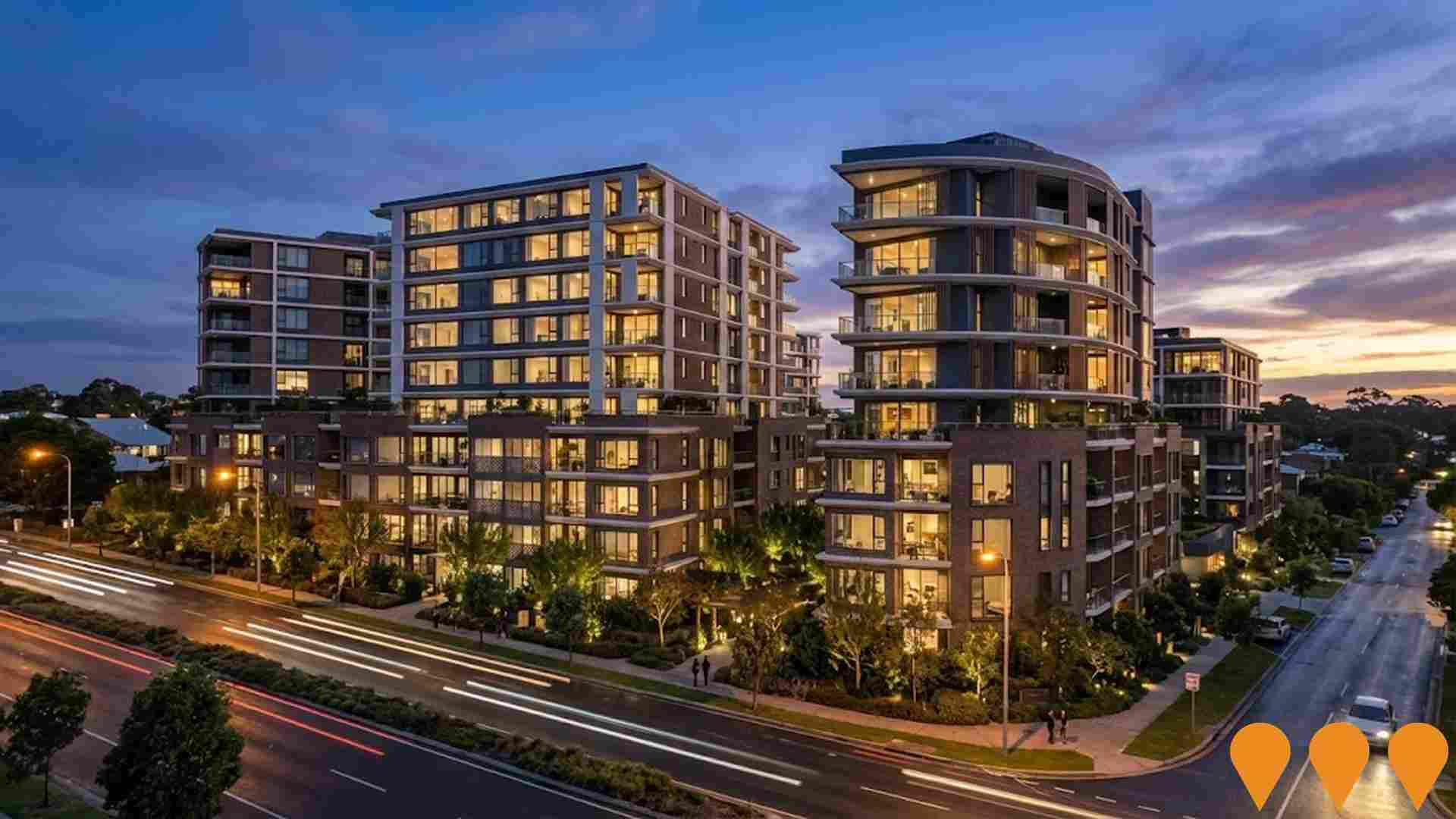Chart Color Schemes
est. as @ -- *
ABS ERP | -- people | --
2021 Census | -- people
Sales Activity
Curious about local property values? Filter the chart to assess the volume and appreciation (including resales) trends and regional comparisons, or scroll to the map below view this information at an individual property level.
Find a Recent Sale
Sales Detail
Population
Population growth drivers in Castle Hill - North are strong compared to national averages based on AreaSearch's ranking of recent, and medium to long-term trends
Castle Hill - North's population is around 13,148 as of Aug 2025. This reflects an increase of 959 people since the 2021 Census, which reported a population of 12,189 people. The change is inferred from the estimated resident population of 12,625 from the ABS in June 2024 and an additional 590 validated new addresses since the Census date. This level of population equates to a density ratio of 1,930 persons per square kilometer. Castle Hill - North's growth rate of 7.9% since the 2021 census exceeded both the SA3 area (5.6%) and the state average. Population growth was primarily driven by overseas migration contributing approximately 88.1% of overall population gains during recent periods.
AreaSearch is adopting ABS/Geoscience Australia projections for each SA2 area, released in 2024 with a base year of 2022. For areas not covered by this data, AreaSearch utilises NSW State Government's SA2 level projections released in 2022 with a base year of 2021. Growth rates by age group from these aggregations are applied to all areas for years 2032 to 2041. Based on the latest population numbers, Castle Hill - North is predicted to experience exceptional growth, placing it in the top 10 percent of statistical areas analysed by AreaSearch over the period until 2041. The area is expected to expand by 6,842 persons by 2041, reflecting an increase of 47.7% in total population over the 17 years.
Frequently Asked Questions - Population
Development
AreaSearch analysis of residential development drivers sees Castle Hill - North recording a relatively average level of approval activity when compared to local markets analysed countrywide
Castle Hill - North has seen approximately 81 new homes approved annually over the past five financial years, with a total of 406 homes approved between FY21 and FY25, and an additional 128 so far in FY26. The average number of people moving to the area per dwelling built over these years is 0.3, indicating that new supply is meeting or exceeding demand, providing ample buyer choice and capacity for population growth beyond current forecasts. The average value of new dwellings developed is $651,000, which is moderately above regional levels, suggesting an emphasis on quality construction.
In FY26, commercial approvals have reached $75.8 million, demonstrating high levels of local commercial activity. Compared to Greater Sydney, Castle Hill - North has around two-thirds the rate of new dwelling approvals per person and ranks among the 57th percentile of areas assessed nationally. The current development composition consists of 29.0% detached dwellings and 71.0% attached dwellings, a significant shift from the current housing mix of 83.0% houses. This change reflects reduced availability of development sites and addresses shifting lifestyle demands and affordability requirements, attracting downsizers, investors, and first-time purchasers. With approximately 277 people per dwelling approval, Castle Hill - North is showing signs of a developing market.
Looking ahead to 2041, the area is expected to grow by around 6,266 residents. If current development rates continue, housing supply may not keep pace with population growth, potentially increasing competition among buyers and supporting stronger price growth.
Frequently Asked Questions - Development
Infrastructure
Castle Hill - North has moderate levels of nearby infrastructure activity, ranking in the top 50% nationally
Changes to local infrastructure significantly impact an area's performance. AreaSearch has identified 24 projects that could affect this region. Notable initiatives include Hills Shire Council's Delivery Program and Operational Plan 2024-2025 Infrastructure Works, Chapman Gardens by CG Group, Hills Showground Village by Deicorp, and Castle Hill Showground Revitalisation. The following list details those most likely to be relevant.
Professional plan users can use the search below to filter and access additional projects.
INFRASTRUCTURE SEARCH
 Denotes AI-based impression for illustrative purposes only, not to be taken as definitive under any circumstances. Please follow links and conduct other investigations from the project's source for actual imagery. Developers and project owners wishing us to use original imagery please Contact Us and we will do so.
Denotes AI-based impression for illustrative purposes only, not to be taken as definitive under any circumstances. Please follow links and conduct other investigations from the project's source for actual imagery. Developers and project owners wishing us to use original imagery please Contact Us and we will do so.
Frequently Asked Questions - Infrastructure
Castle Towers Expansion
Major $1+ billion expansion of Castle Towers creating NSW's largest shopping centre with over 500 stores, new dining and entertainment precincts, a fresh food market, premium cinema, integrated public transport hub, additional office space and two residential towers.

Hills Shire Council Delivery Program and Operational Plan 2024-2025 Infrastructure Works
The Hills Shire Council's 2024-2025 infrastructure program is a significant component of the overall $308.5 million Delivery Program and Operational Plan. The total infrastructure expenditure for 2024-2025 is $162.8 million, focusing on maintaining, renewing, and building new assets like roads, parks, paths, and playgrounds across the Shire to accommodate rapid population growth. Key works include road upgrades (Annangrove Road, Withers Road, Boundary Road), new footpaths, cycleways, bridges, and new and refurbished parks and playgrounds, including Livvi's Place extension at Bernie Mullane Sports Complex. The Council is also actively campaigning for state and federal funding for critical infrastructure, particularly in high-growth areas like Box Hill and the Kellyville/Bella Vista precincts.
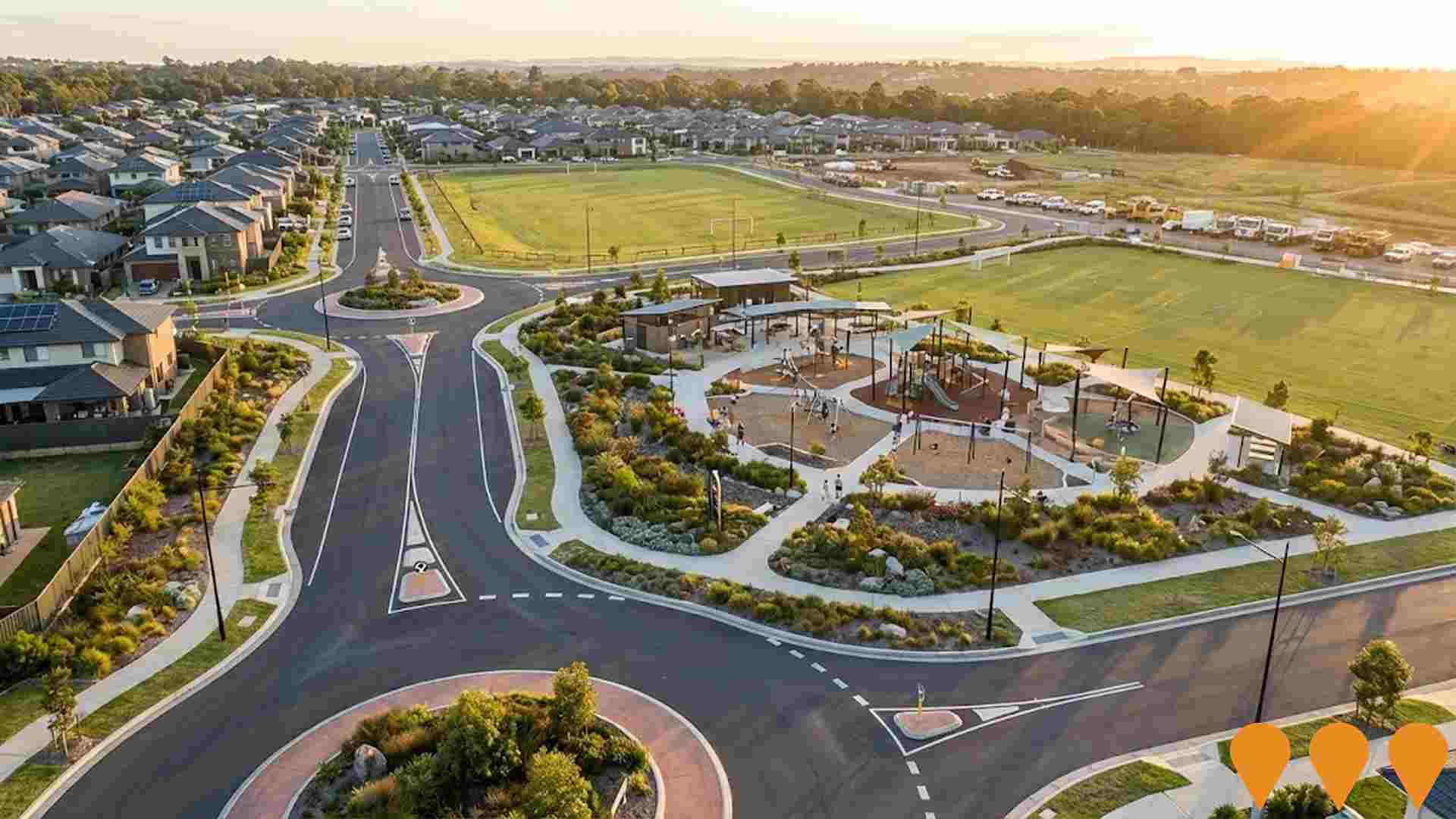
Cecil & Roger Mixed-Use Development
State Significant Development comprising demolition of existing structures and staged construction of a mixed-use precinct with 8,025 sqm commercial floor space and 615 residential apartments (including 169 affordable/in-fill dwellings). Delivered in three stages with four buildings ranging 5-25 storeys, public through-site link, and basement parking.
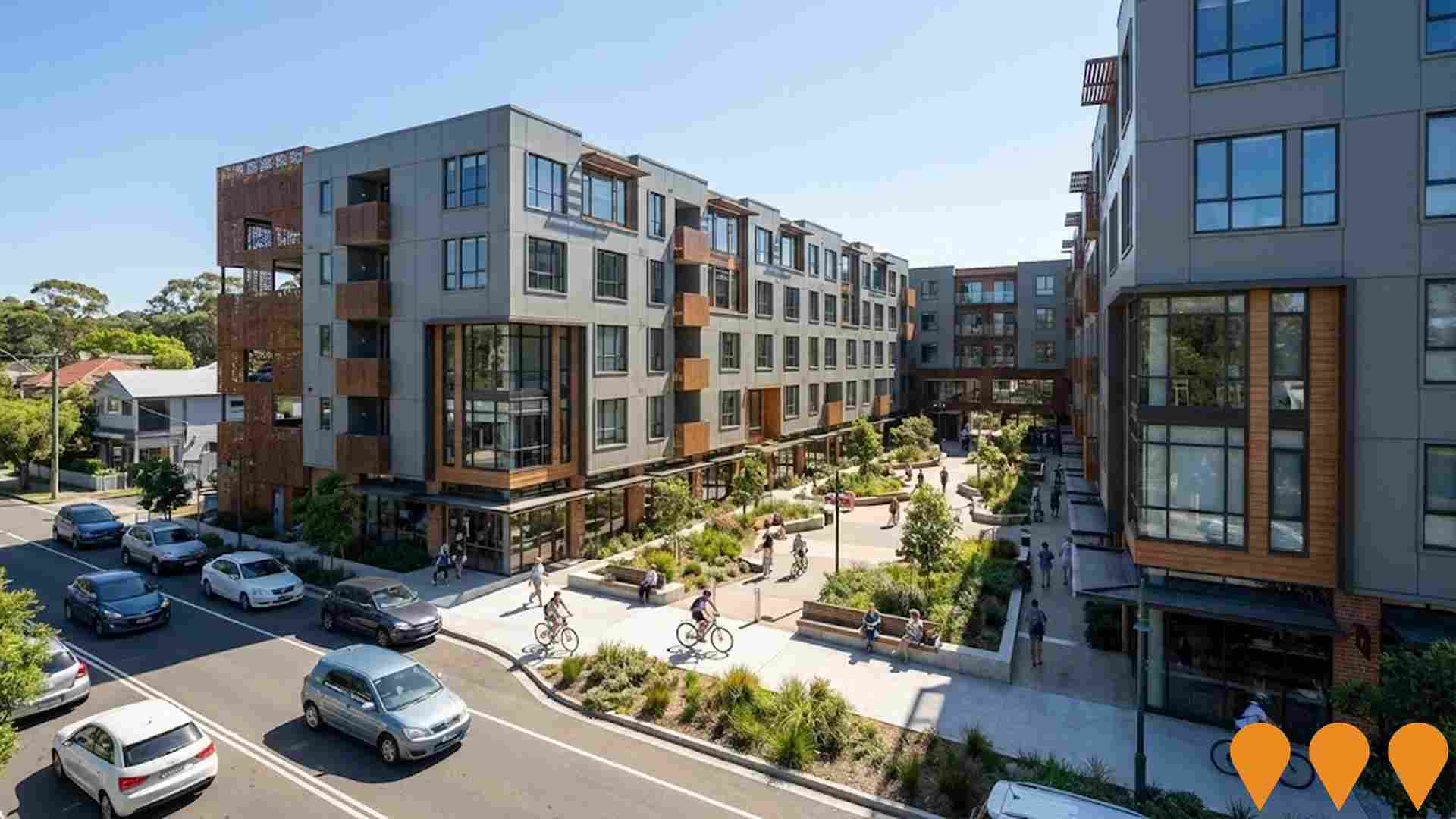
Castle Hill Showground Revitalisation
Comprehensive revitalisation project to create a thriving cultural hub capitalizing on surrounding development and metro connectivity. Will support community, arts, sporting and leisure activities while preserving the showground's heritage and function. Includes new facilities, grandstands, exhibition spaces and community amenities for agricultural shows and events.
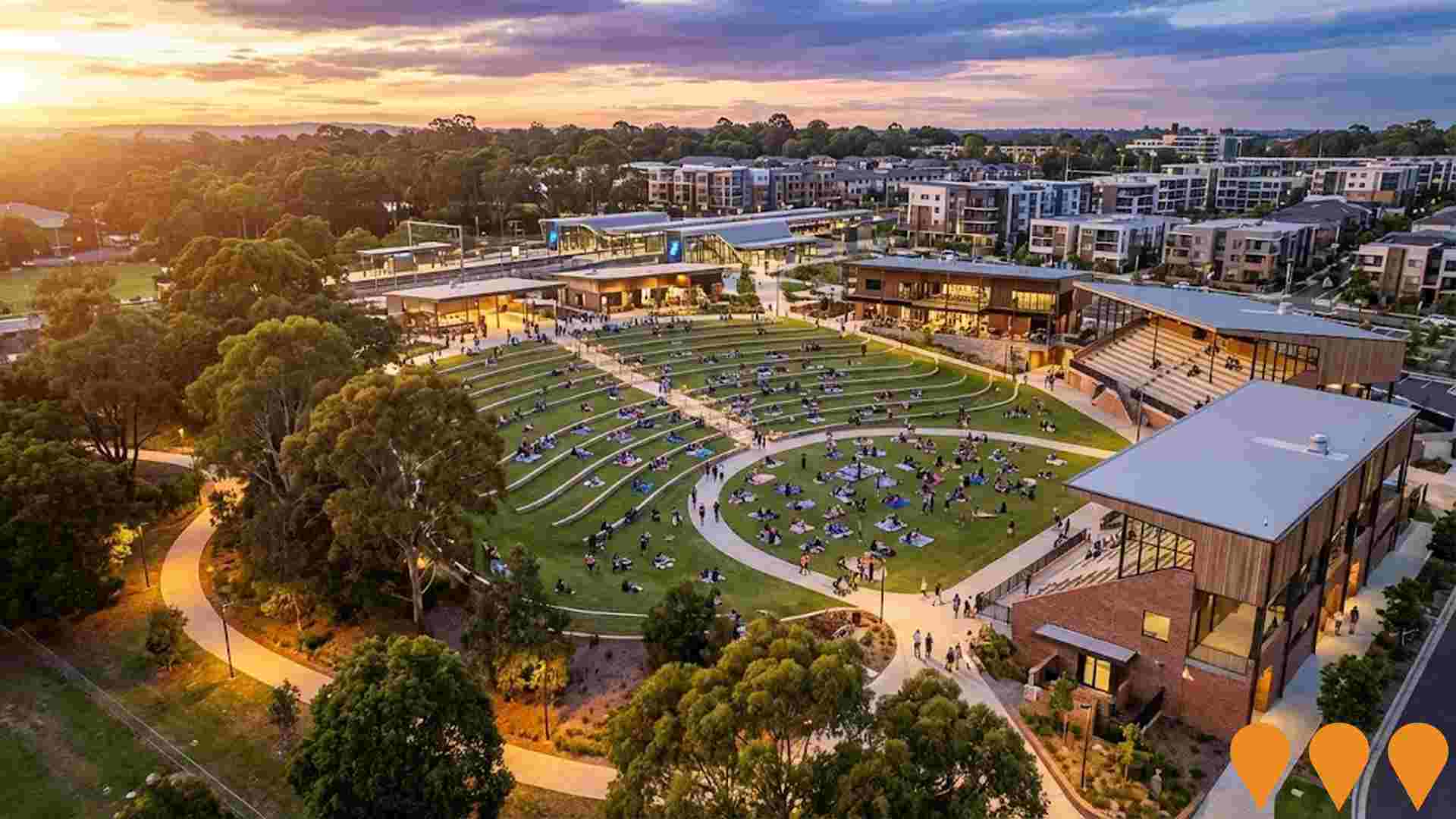
Castle Hill Panorama
Five residential buildings from four to seven storeys on 12,407sqm site designed by MHN Design Union. Features 315 apartments (originally approved for 228, expanded to 315) with existing mature trees retained in centre of site, located 650m from Showground Metro Station. $320 million development approved by Central Sydney Planning Panel. Eight towers replaced 16 houses in this new precinct development.
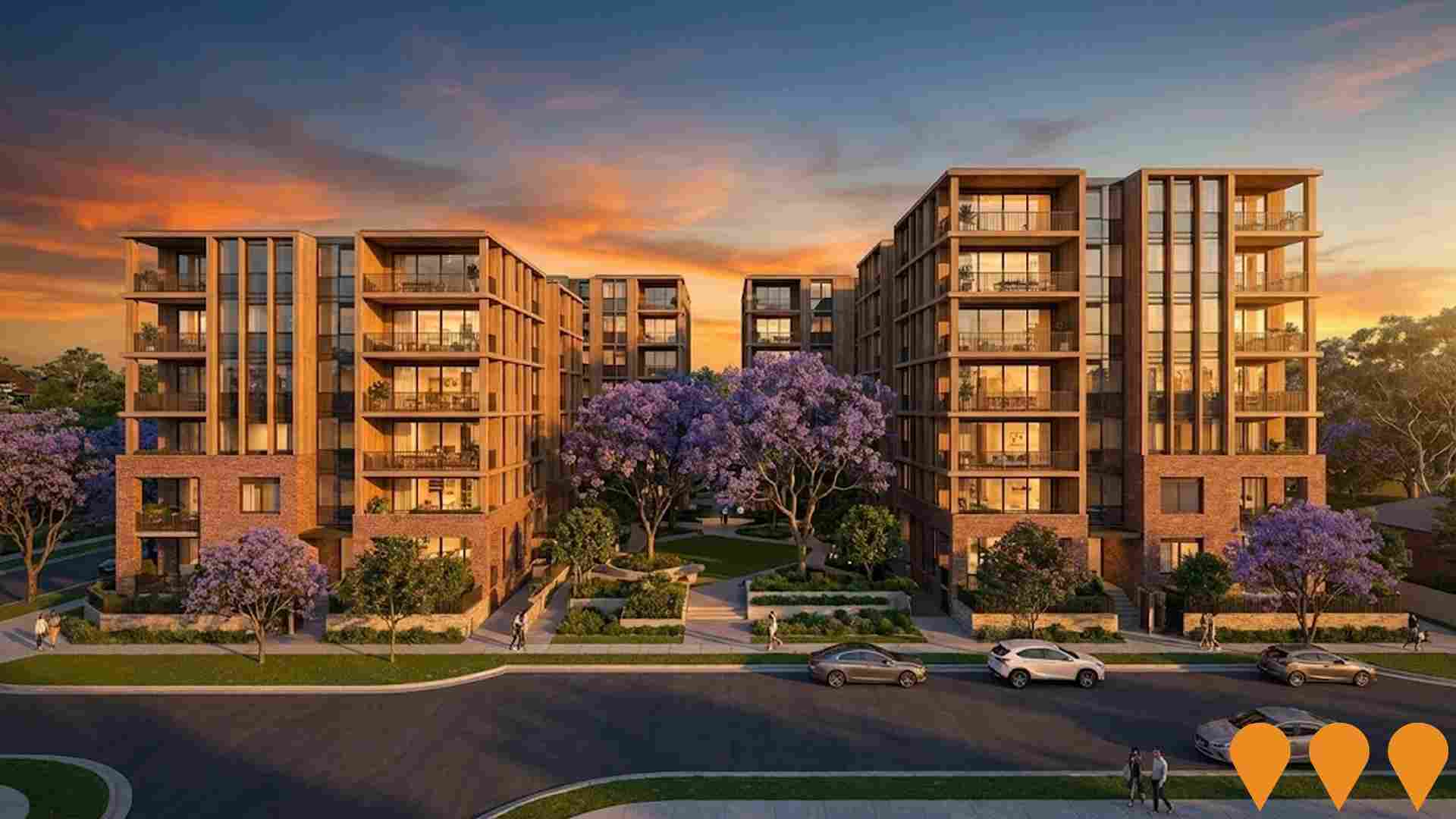
Commercial and Retail Development at 21-23 Victoria Avenue, Castle Hill
Mixed-use redevelopment of a 2-hectare site for commercial and retail development including specialised retail (bulky goods), commercial offices, medical suites, a child care centre, business premises, gym, and hotel floor space within a built form up to 12 storeys. The proposal seeks to increase maximum building height from 20m to RL 140.5m and floor space ratio from 1:1 to 2.3:1. Located 600m west of Hills Showgrounds Metro Station.
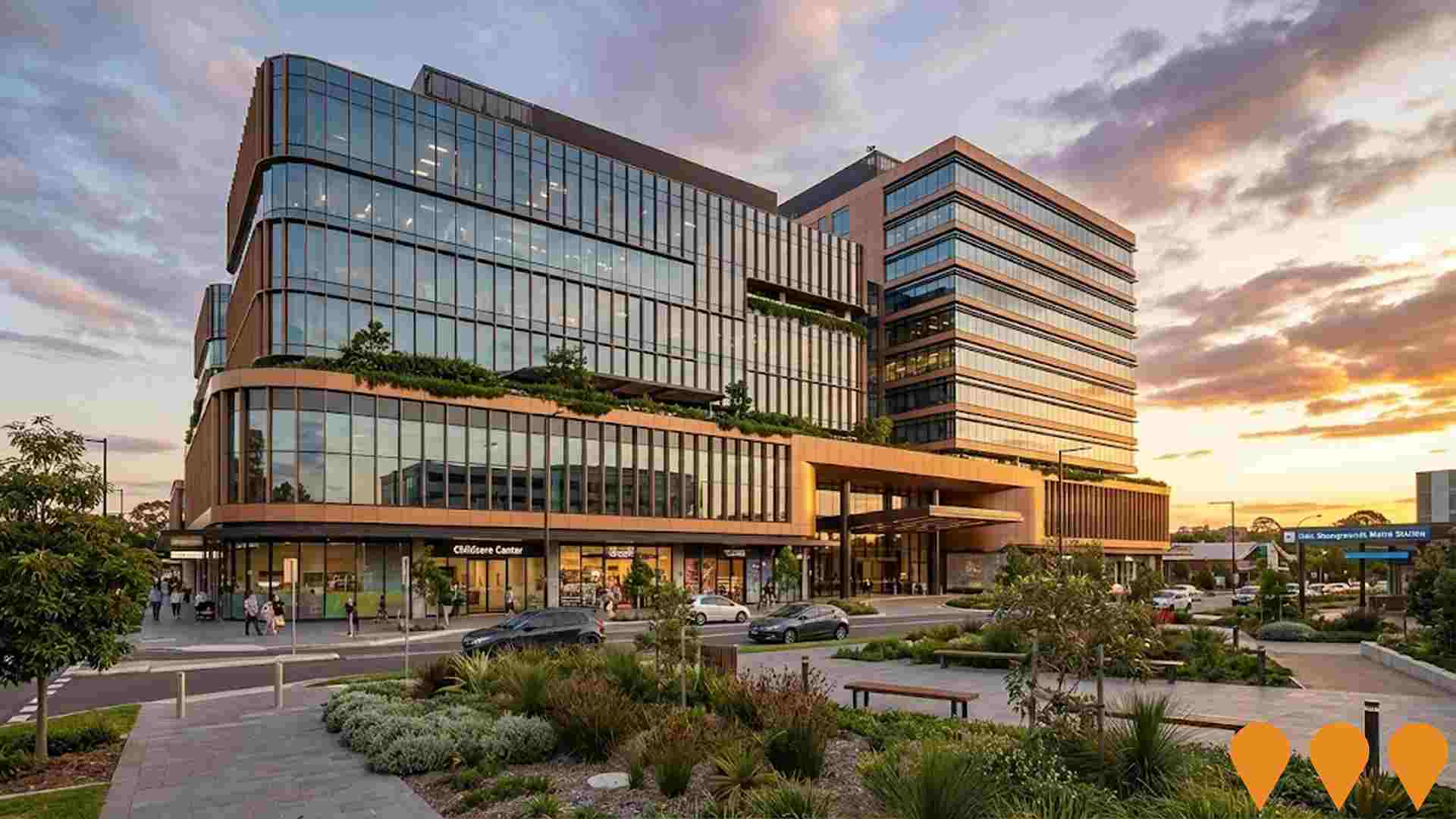
Chapman Gardens by CG Group
258 terrace-style apartments across three buildings (The Chapman, Greenview, and Parkfront) designed by PTW Architects. Features private courtyards, rooftop gardens, and 50% landscaped grounds in the Castle Hill Showground Precinct, just 400m from the metro station.

Hills Showground East Precinct
A mixed-use development featuring 873 new homes across five residential buildings up to 16 storeys, 3,500sqm of public open space including a water play area, community garden, and shared co-working spaces. Includes retail, dining, and commercial facilities with direct connectivity to Hills Showground Metro Station.
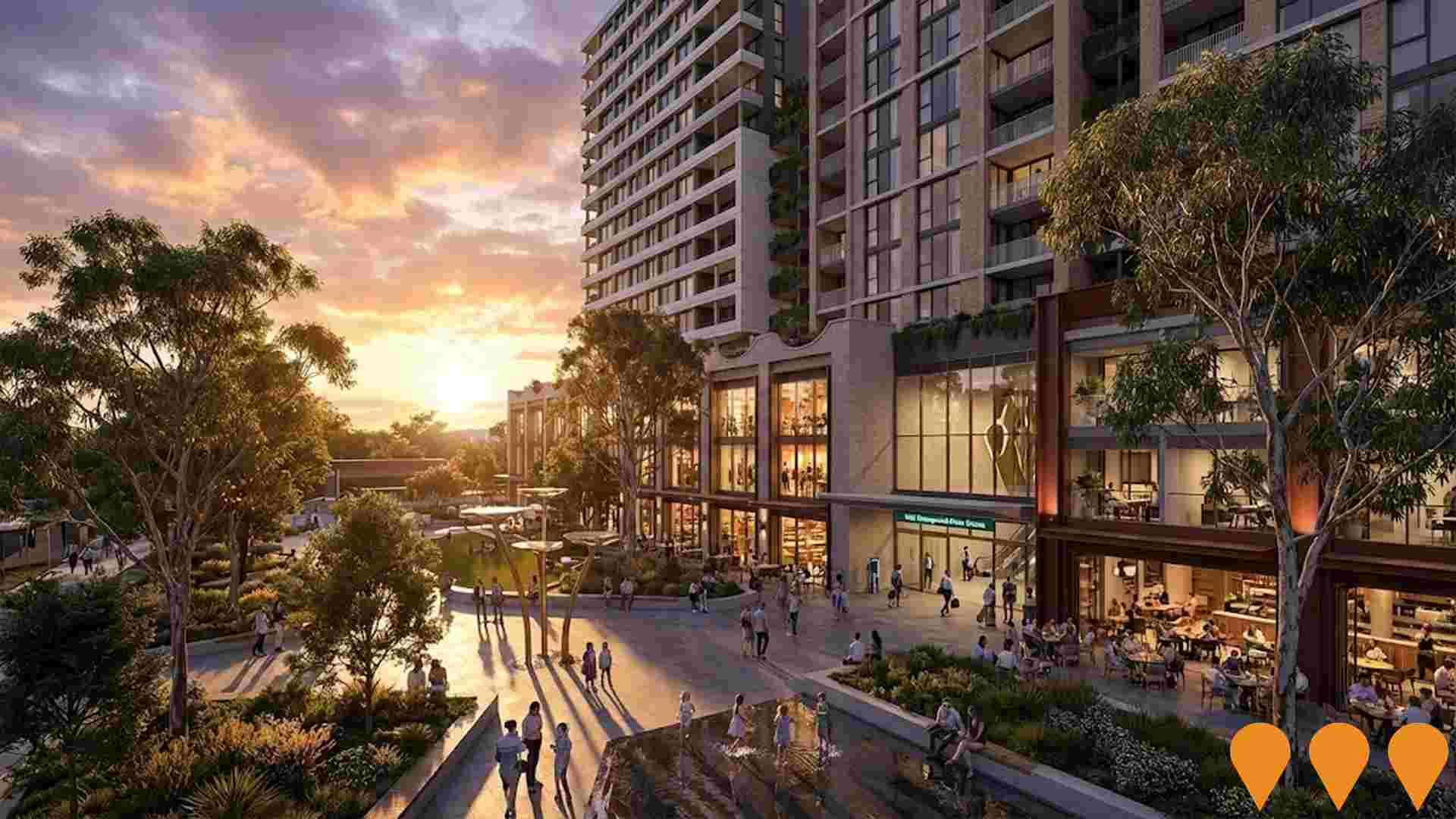
Employment
Employment conditions in Castle Hill - North remain below the national average according to AreaSearch analysis
Castle Hill - North has a highly educated workforce with professional services well represented. The unemployment rate in June 2025 was 4.0%, below Greater Sydney's rate of 4.2%.
Employment grew by 2.2% over the past year. Health care & social assistance, professional & technical, and retail trade are dominant employment sectors among residents. Transport, postal & warehousing employs just 2.7% of local workers, lower than Greater Sydney's 5.3%.
The area appears to have limited local employment opportunities. Between June 2024 and June 2025, employment levels increased by 2.2%, labour force grew by 3.1%, causing the unemployment rate to rise by 0.9 percentage points. In comparison, Greater Sydney saw employment grow by 2.6% and unemployment rise by 0.3 percentage points. National employment forecasts from Jobs and Skills Australia (May 2025) project a 6.6% increase over five years and 13.7% over ten years. Applying these projections to Castle Hill - North's employment mix suggests local growth of approximately 7.0% over five years and 14.3% over ten years, though this is a simplified extrapolation for illustrative purposes only.
Frequently Asked Questions - Employment
Income
Income metrics indicate excellent economic conditions, with the area achieving higher performance than 75% of national locations assessed by AreaSearch
Castle Hill - North had a median taxpayer income of $59,175 and an average of $87,832 in the latest postcode level ATO data aggregated by AreaSearch for financial year 2022. This is among the highest in Australia, compared to Greater Sydney's median income of $56,994 and average income of $80,856. Based on Wage Price Index growth of 12.61% since financial year 2022, current estimates would be approximately $66,637 (median) and $98,908 (average) as of September 2025. Census data shows household incomes rank exceptionally at the 94th percentile ($2,721 weekly). Distribution data indicates that the $4000+ earnings band captures 32.0% of the community (4,207 individuals), contrasting with the surrounding region where the $1,500 - 2,999 bracket leads at 30.9%. Economic strength is evident through 45.8% of households achieving high weekly earnings exceeding $3,000, supporting elevated consumer spending. Housing accounts for 14.4% of income while strong earnings rank residents within the 94th percentile for disposable income and the area's SEIFA income ranking places it in the 9th decile.
Frequently Asked Questions - Income
Housing
Castle Hill - North is characterized by a predominantly suburban housing profile, with above-average rates of outright home ownership
In Castle Hill - North, as per the latest Census evaluation, 83.2% of dwellings were houses, with the remaining 16.8% comprising semi-detached properties, apartments and other dwelling types. This is compared to Sydney metropolitan area's 78.2% houses and 21.8% other dwellings. Home ownership in Castle Hill - North stood at 40.9%, with mortgaged dwellings at 39.9% and rented ones at 19.1%. The median monthly mortgage repayment in the area was $3,000, aligning with Sydney metro's average, while median weekly rent was $600 compared to Sydney metro's $580. Nationally, Castle Hill - North's median monthly mortgage repayments were significantly higher at $3,000 against Australia's average of $1,863, and median weekly rents were substantially above the national figure of $375.
Frequently Asked Questions - Housing
Household Composition
Castle Hill - North features high concentrations of family households, with a higher-than-average median household size
Family households constitute 86.7% of all households, including 49.7% couples with children, 27.4% couples without children, and 8.9% single parent families. Non-family households comprise the remaining 13.3%, with lone person households at 12.4% and group households making up 1.1%. The median household size is 3.1 people, which is larger than the Greater Sydney average of 3.0.
Frequently Asked Questions - Households
Local Schools & Education
Educational achievement in Castle Hill - North places it within the top 10% nationally, reflecting strong academic performance and high qualification levels across the community
Educational attainment in Castle Hill - North is notably high, with 45.1% of residents aged 15 and above holding university qualifications, compared to the national average of 30.4% and the NSW average of 32.2%. This educational advantage is largely attributed to bachelor degrees (28.1%), followed by postgraduate qualifications (13.6%) and graduate diplomas (3.4%). Vocational pathways account for 24.9% of qualifications, with advanced diplomas at 10.8% and certificates at 14.1%. Educational participation is high, with 31.7% of residents currently enrolled in formal education, including secondary (10.5%), primary (9.7%), and tertiary (6.6%) levels.
Castle Hill - North's three schools have a combined enrollment of 3,599 students as of the latest data. The area demonstrates significant socio-educational advantages and academic achievement, with an ICSEA score of 1127. Education provision is balanced with two primary and one secondary school serving distinct age groups. As of 2021, the area functions as an education hub with 27.4 school places per 100 residents, significantly above the regional average of 17.4, attracting students from surrounding communities.
Frequently Asked Questions - Education
Schools Detail
Nearby Services & Amenities
Transport
Transport servicing is high compared to other areas nationally based on assessment of service frequency, route connectivity and accessibility
Transport analysis shows 83 active stops operating in Castle Hill - North area, including lightrail and bus services. These stops are served by 134 routes, offering 6,505 weekly passenger trips combined. Transport accessibility is rated excellent, with residents typically located 170 meters from nearest stop.
Service frequency averages 929 trips per day across all routes, equating to approximately 78 weekly trips per stop.
Frequently Asked Questions - Transport
Transport Stops Detail
Health
Castle Hill - North's residents boast exceedingly positive health performance metrics with very low prevalence of common health conditions across all age groups
Health outcomes data shows excellent results in Castle Hill - North, with very low prevalence of common health conditions across all age groups. The rate of private health cover is exceptionally high at approximately 64% of the total population (8388 people), compared to the national average of 55.3%.
The most prevalent medical conditions are arthritis and asthma, affecting 6.0% and 6.0% of residents respectively. A majority, 75.5%, report being completely free from medical ailments, slightly lower than Greater Sydney's 75.9%. As of 2021, 19.4% of residents are aged 65 and over (2557 people). Health outcomes among seniors align with the general population's health profile.
Frequently Asked Questions - Health
Cultural Diversity
Castle Hill - North is among the most culturally diverse areas in the country based on AreaSearch assessment of a range of language and cultural background related metrics
Castle Hill-North ranks high in cultural diversity, with 40.5% of its population speaking a language other than English at home and 42.9% born overseas. Christianity is the predominant religion, comprising 55.1%. Hinduism is notably overrepresented at 4.8%, compared to 8.6% across Greater Sydney.
The top three ancestry groups are English (17.9%), Australian (16.0%), and Chinese (15.2%). Korean (2.6%) and Lebanese (2.3%) are also overrepresented, while Sri Lankan is slightly underrepresented at 0.8%.
Frequently Asked Questions - Diversity
Age
Castle Hill - North hosts an older demographic, ranking in the top quartile nationwide
The median age in Castle Hill-North is 43 years, which is higher than Greater Sydney's average of 37 and the national average of 38 years. The age profile shows that those aged 65-74 are particularly prominent at 11.2%, while those aged 25-34 make up a smaller proportion at 7.3%. Between 2021 and present, the population aged 15 to 24 has increased from 13.3% to 14.8%. Conversely, the age group of 55 to 64 has decreased from 12.9% to 11.5%. By 2041, demographic projections indicate significant shifts in Castle Hill-North's age structure, with the 15 to 24 age cohort projected to rise substantially by 1,167 people (60%), from 1,945 to 3,113.

